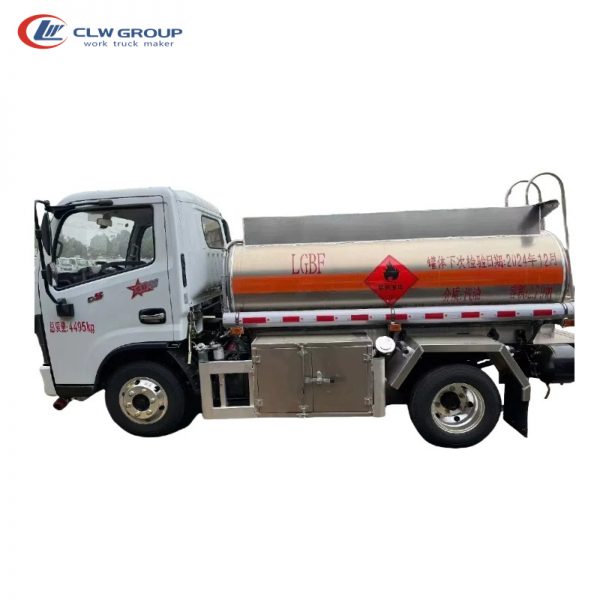Introduction
In today’s fast-paced world, the transportation industry plays a crucial role in ensuring the efficient movement of goods and services. Work truck trailers are essential assets for businesses that rely on transporting materials, equipment, or products to various locations. To optimize the performance of these work truck trailers, companies are increasingly turning to telematics solutions. Telematics technology allows for the remote monitoring and management of vehicles and trailers, providing valuable data insights that can improve efficiency, safety, and overall operations. This article explores the impact of work truck trailer telematics on businesses, highlighting the benefits, challenges, and best practices associated with implementing this technology.
Understanding Work Truck Trailer Telematics
Work truck trailer telematics refers to the use of technology to track, monitor, and manage trailers remotely. Telematics systems typically consist of hardware devices installed on trailers, such as GPS trackers, sensors, and communication modules, along with software platforms that collect and analyze data transmitted by these devices. By leveraging telematics technology, businesses can gain real-time visibility into their trailer fleet, enabling them to make informed decisions to improve efficiency and productivity.
Benefits of Work Truck Trailer Telematics
1. Enhanced mechanical sweeper truck and Tracking: One of the primary benefits of work truck trailer telematics is the ability to track the location and status of trailers in real-time. This visibility allows businesses to monitor the movement of trailers, identify potential delays or issues, and optimize route planning for more efficient operations.
2. Improved Asset Utilization: Telematics technology provides insights into trailer utilization, helping businesses maximize the use of their assets. By tracking factors such as idle time, mileage, and utilization rates, companies can identify opportunities to optimize trailer usage, reduce downtime, and increase productivity.
3. Maintenance Management: Telematics systems can monitor the health and performance of trailers, enabling proactive maintenance and reducing the risk of unexpected breakdowns. By tracking factors like engine diagnostics, tire pressure, and fuel consumption, businesses can schedule maintenance tasks more effectively, leading to cost savings and improved reliability.
4. Driver Behavior Monitoring: Work truck trailer telematics can also monitor driver behavior, providing insights into factors such as speeding, harsh braking, and idling. By analyzing this data, businesses can identify areas for driver training and coaching to promote safer driving practices and reduce the risk of accidents.
5. Compliance and Regulation: Telematics technology can help businesses ensure compliance with industry regulations and standards. By tracking factors like hours of service, vehicle inspections, and cargo monitoring, companies can demonstrate adherence to legal requirements and avoid penalties or fines.
Challenges of Work Truck Trailer Telematics
While work truck trailer telematics offer numerous benefits, there are also challenges associated with implementing and managing this technology. Some of the key challenges include:

1. Initial Investment: The upfront cost of acquiring and installing telematics hardware and software can be substantial for businesses, especially for companies with large trailer fleets. However, the long-term benefits of improved efficiency and cost savings often outweigh the initial investment.
2. Data Security and Privacy: Telematics systems collect and transmit sensitive data about trailers, drivers, and operations. Ensuring the security and privacy of this data is crucial to protect against cyber threats and unauthorized access. Businesses must implement robust security measures and protocols to safeguard telematics data.
3. Integration with Existing Systems: Integrating telematics technology with existing fleet management systems, dispatch software, and other operational tools can be complex. Businesses may encounter compatibility issues, data synchronization challenges, and the need for additional training to effectively integrate telematics into their workflows.
4. Driver Acceptance and Training: Introducing telematics technology to drivers can sometimes be met with resistance, as it may be perceived as intrusive or a way to monitor performance. Businesses must communicate the benefits of telematics to drivers, provide training on how to use the technology effectively, and address any concerns to ensure successful adoption.
Best Practices for Implementing Work Truck Trailer Telematics
To maximize the benefits of work truck trailer telematics and address the challenges associated with this technology, businesses can follow these best practices:
1. Define Clear Objectives: Before implementing telematics technology, businesses should establish clear objectives and goals for how they intend to use the data collected from trailers. Whether the focus is on improving efficiency, safety, compliance, or cost savings, having defined objectives will guide the implementation process.
2. Select the Right Telematics Solution: There are various telematics providers and solutions available in the market, each offering different features and capabilities. Businesses should evaluate their specific needs and requirements to choose a telematics solution that aligns with their goals and budget.
3. Involve Stakeholders: Successful telematics implementation requires buy-in from key stakeholders, including fleet managers, drivers, IT staff, and management. Involving stakeholders in the decision-making process, providing training and support, and addressing concerns will help ensure a smooth transition to telematics technology.
4. Monitor Performance and ROI: Once telematics technology is implemented, businesses should regularly monitor performance metrics and analyze data insights to measure the return on investment. Tracking key performance indicators related to efficiency, safety, maintenance costs, and compliance will help businesses identify areas for improvement and optimization.
5. Continuously Improve and Adapt: Telematics technology is constantly evolving, with new features and capabilities being introduced regularly. Businesses should stay informed about industry trends, best practices, and advancements in telematics technology to continuously improve their operations and adapt to changing requirements.
Conclusion
Work truck trailer telematics offer businesses a powerful tool to enhance efficiency, safety, and overall performance in their transportation operations. By leveraging technology to track, monitor, and manage trailers remotely, companies can gain valuable insights into their fleet operations, reduce costs, improve asset utilization, and ensure compliance with regulations. While challenges such as initial investment, data security, and driver acceptance exist, following best practices for implementing telematics technology can help businesses overcome these obstacles and maximize the benefits of this transformative technology. As the transportation industry continues to evolve, work truck trailer telematics will play an increasingly important role in driving operational excellence and success for businesses across the globe.
